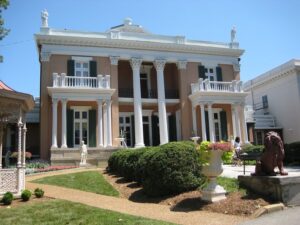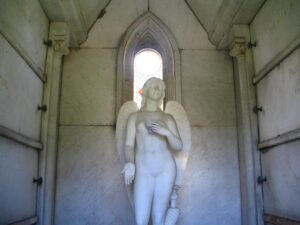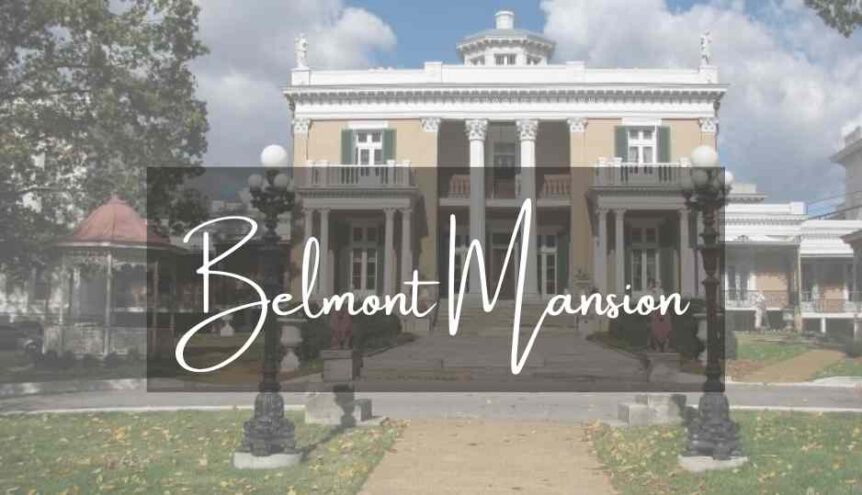 When I became a middle school teacher, I discovered very quickly that I learned more from teaching a subject than most of my students. Of course, eighth graders aren’t known for their hunger of knowledge—especially U.S. history. But this same holds true for my delving into the plantations of Middle Tennessee.
When I became a middle school teacher, I discovered very quickly that I learned more from teaching a subject than most of my students. Of course, eighth graders aren’t known for their hunger of knowledge—especially U.S. history. But this same holds true for my delving into the plantations of Middle Tennessee.
In researching the Belmont Mansion (aka Acklen Hall and Belle Monte), I was taken aback that it was the wife, Adelicia Acklen, who was the face of this place. In the 1800’s it wasn’t often a woman ran the show. So, of course, I was compelled to research Adelicia—whose legal name was Adelicia Hayes Franklin Acklen Cheatham. Quite a name for someone who only lived to be seventy!
Adelicia became the wealthiest woman in Tennessee and a plantation owner after her first husband (Isaac Franklin) died in 1846. Franklin was a successful slave trader (I know, it makes me cringe to even write this—but it’s true), and he purchased several plantations, lands, and slaves in Tennessee and Louisiana. I find it interesting that Adelicia sold four connected Louisiana plantations as one piece, which later became the site for the Louisiana State Penitentiary—also known as Angola, which was named after one of those plantations (and that was named for where most of their slaves were born). It is now one of the largest maximum security prisons in the United States.
Here’s a little tidbit, when Adelicia married Franklin, she was 22 and he was 50—talk about a May-December romance. When he died, she inherited the Fairvue Plantation in Gallatin, Tennessee, the four aforementioned cotton plantations in Louisiana, barren land in Texas, stocks, bonds, and hundreds of slaves. This is how she became the wealthiest woman in the state. She and Franklin had four children together before he died.
It was after marrying her second husband, Joseph Alexander Smith Acklen (these Southerners do tend to like long names) that she built the Belmont Mansion in Nashville. We think of Nashville as being a large city, but at the time, it was all rolling hills and lots of trees. This was one of the most elaborate antebellum homes in the South with 36 rooms and 20,000 square feet of living space—and it was their summer home! Of course, Adelicia needed the space since she had six more children with Joseph. And just to keep things comfortable, a T-shaped guest house (with a bowling alley) and an art gallery were built alongside the mansion.
 This mansion held some of the most elaborate parties with its 58-foot Grand Salon, 22-foot-tall-vaulted ceilings, ornate cornices, Corinthian columns, and free-standing staircase. The family quarters had ten bedrooms, two dining rooms, a library, very impressive front hall, and lots of family and entertaining parlors. The kitchen and service areas were built in the 8,500-square-foot basement. Can you imagine? I could triple the size of my house and still fit it in their basement.
This mansion held some of the most elaborate parties with its 58-foot Grand Salon, 22-foot-tall-vaulted ceilings, ornate cornices, Corinthian columns, and free-standing staircase. The family quarters had ten bedrooms, two dining rooms, a library, very impressive front hall, and lots of family and entertaining parlors. The kitchen and service areas were built in the 8,500-square-foot basement. Can you imagine? I could triple the size of my house and still fit it in their basement.
Of course, they also needed the 180 acres it all sat on for their lavish gardens, conservatories, aviary, lake, and wait for it…a zoo. I must admit, I could get behind the conservatory and gardens (which reminds me of what we saw when we visited the Biltmore in Ashville, North Carolina). Still, it is astounding how the wealthy live, isn’t it?
 They weren’t without heartache, however. Two of Adelicia’s daughters died young—Laura and Corinne. I assume since they were both born in 1852 and died in 1855, they were twins. Joseph passed away in 1863.
They weren’t without heartache, however. Two of Adelicia’s daughters died young—Laura and Corinne. I assume since they were both born in 1852 and died in 1855, they were twins. Joseph passed away in 1863.
Aside from the two-week occupation by Union General Thomas Wood prior to the Battle of Nashville that took place in December 1864, the house remained undamaged during the Civil War. The grounds suffered a little, though, since there were 13,000 Union troops scuffling around it for two weeks.
After the Civil War, Adelicia married again. This third marriage was to Dr. William Archer Cheatham. He was a physician and the head of the State Insane Asylum. Apparently, he wasn’t interesting enough to hold Adelicia’s attention, because she quickly became bored with the marriage and moved to Washington, D.C. where she lived until she died while on a shopping trip in New York City on May 4, 1887.
It was then that the Belmont Mansion was sold. It was used later as a girls’ academy, then for Ward-Belmont College, which eventually became Belmont University. It sits in the middle of the campus today and is open for tours. I didn’t personally see this place because time was an issue for me. But I would love visit and take in the surrounding gardens and fountains.
Sorry I can’t take you on the tour with me, but as a consolation prize, don’t forget to enter here for your chance to win a $50 Amazon Gift Card!







Comments 3
Oh my goodness! I loved this. Now I need to donmore research on her or see if there is a book about her.
Thank you for a chance to win a gift card.
Blessings,
Jean
Author
Isn’t history fun? I think I’d like to write a historical fiction with her as a character! Thank you for participating.
What a beautiful setting and fantastic historical facts. Excited to read this.